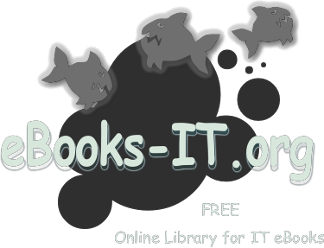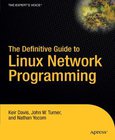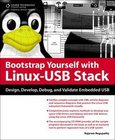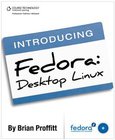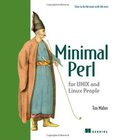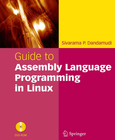Search Engine
Page 5 from 311 results
The Definitive Guide to Linux Network Programming
The Definitive Guide to Linux Network Programming offers a clear, concise treatment of creating clients and servers under the Linux operating system. This book assumes that you know C and have experience developing code on Linux, but it provides everything else you'll need as a programmer for real-world network programming. Whether youre a Windows developer looking to expand to Linux, or youre a proficient Linux developer looking to incorporate client-server programming into your applications, this book has a wealth of invaluable information to suit your needs. This book covers design, implementation, debugging, and security. Youll also learn about the many kinds of socket types, sessioned versus sessionless protocols, and encryption, as well as how to build a custom protocol, how to use SSL, and how to tunnel data. Table of Contents Networks and Protocols Functions Socket Programming Protocols, Sessions, and State Client-Server Architectur...
Bootstrap Yourself with Linux-USB Stack
Design, Develop, Debug, and Validate Embedded USB Systems
Learn to design, develop, and validate USB systems with ease, using this valuable resource that provides a detailed bootstrap session on the Linux-USB design and implementation. BOOTSTRAP YOURSELF WITH LINUX-USB STACK offers a tour of the Linux-USB stack, explaining how to develop drivers for USB device and host controllers on Linux. It moves on to explore the interfaces and data structures of a USB module with UML diagrams, concluding each chapter with a sample implementation that applies the information just covered. A comprehensive look at the various tools and methods available on Linux to validate a USB system is also provided. Using a straightforward writing style, this book is a powerful tool for anyone learning to develop a protocol stack with proper architecture and design, ultimately leading to better quality, maintainability, and testability....
Introducing Fedora
Desktop Linux
Many people think of Fedora as an operating system that is way over their heads -- that only techies can use this strange, arcane OS with the odd name. Introducing Fedora: Desktop Linux is here to tell you that this is simply not the case. Fedora, and Linux in general, have become very easy for everyday home and business users to install and use. Now you can find out for yourself, in just one weekend, how easy it is to get started using Fedora and discover that there is life beyond Windows. Introducing Fedora: Desktop Linux is for anyone who wants to learn Fedora, specifically Fedora 13. Think of this book as a personal tutorial, a one-on-one class with an expert user of Fedora....
Minimal Perl
For UNIX and Linux People
A guide to a carefully designed subset of the Perl language, this book makes Perl more accessible to those having UNIX/Linux skill levels ranging from elementary to expert by capitalizing on their existing knowledge of important utilities (grep, awk), or essential concepts (filters, command substitution, looping). Dozens of detailed programming examples are shown, drawn from contemporary application areas such as system administration, networking, Web development, databases, finance, HTML, CGI, and text analysis. Broken into two parts, the first is for all who are familiar with core UNIX/Linux commands such as grep and caters to readers ranging from managers and administrative staff to advanced programmers. The second part is for developers experienced in Bourne, Korn, Bash, or POSIX Shell programming and makes Perl scripting easy to learn by showing Shell examples along with their Perl counterparts. Many Perl modules are covered including freely...
Guide to Assembly Language Programming in Linux
Introduces Linux concepts to programmers who are familiar with other operating systems such as Windows XP Provides comprehensive coverage of the Pentium assembly language. Processor designs can be broadly divided into CISC (Complex Instruction Set Computers) and RISC (Reduced Instruction Set Computers). The dominant processor in the PC market, Pentium, belongs to the CISC category, and Linux is fast becoming the number one threat to Microsoft Windows in the server market. This unique guidebook provides comprehensive coverage of the key elements of Assembly language programming, specifically targeting professionals and students who would like to learn Assembly and intend or expect to move to the Linux operating system. The book instructs users on how to install Linux on existing Windows machines. Readers are introduced to Linux and its commands, and will gain insights into the NASM assembler (installation and usage)....
2007 - 2018 © eBooks-IT.org
